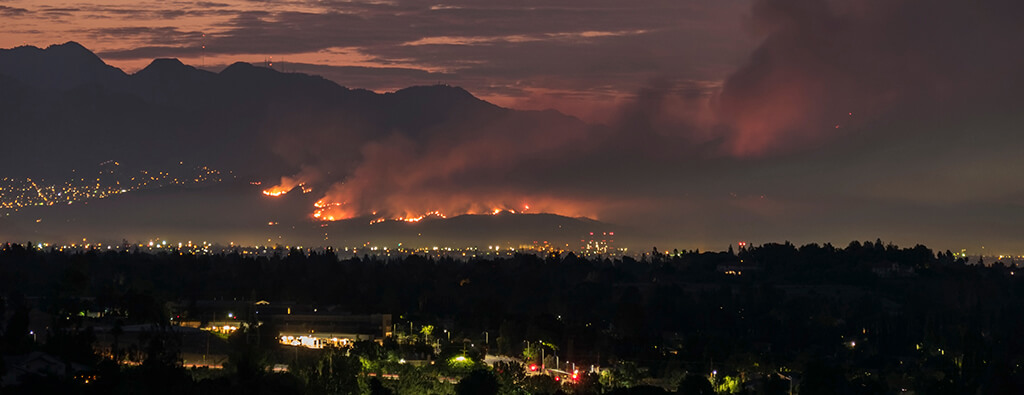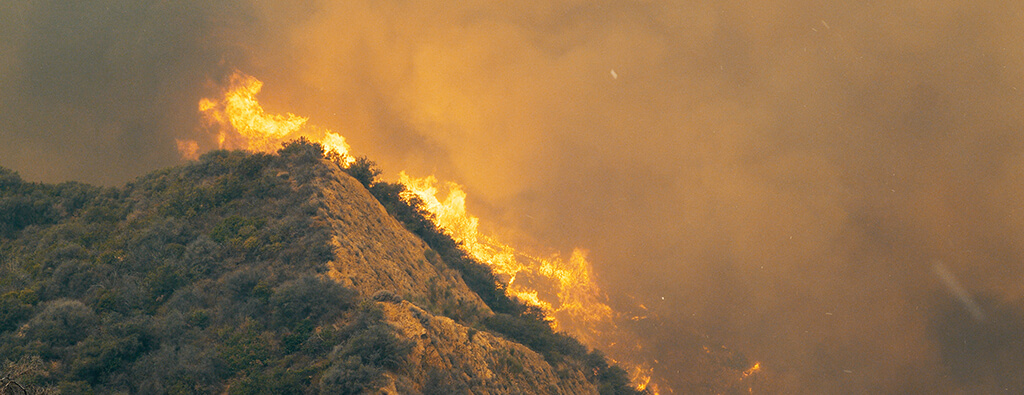Wildfires are unpredictable disasters with devastating consequences. They disrupt ecosystems, destroy homes, displace communities, and endanger lives.
Understanding wildfire prevention, preparedness, and mitigation solutions is essential for local governments, community leaders, and emergency managers to enhance resilience and protect communities.
Below, we’ll explore the challenges and solutions surrounding wildfires, drawing on the expertise of Mark Boone, Senior Director of Engagement Management at Tidal Basin.
With years of experience in disaster mitigation, recovery, and resilience-building, Mark brings invaluable expertise to support communities in addressing their disaster management challenges.
This article provides research-driven strategies for wildfire prevention, preparedness, mitigation, and response, equipping readers with the tools to protect lives and landscapes effectively.
The Importance of Wildfire Awareness and Preparedness
Wildfire season often coincides with late spring/summer to the fall, when heatwaves, droughts, and dry vegetative fuel heighten the risk of ignition.
While certain regions, including California, the Appalachian areas of the Southeast, and parts of the Pacific Northwest, are more prone to wildfires, these events are evolving, increasingly threatening suburban and previously unaffected areas.
According to the National Interagency Fire Center, tens of thousands of wildfires occur annually in the United States alone, burning millions of acres of land.
Nearly 90% of wildfires are caused by human actions, from unattended campfires to equipment malfunctions.
Raising awareness about wildfires causes and educating residents about proactive fire-safe behaviors, especially in May during National Wildfire Awareness Month, substantially reduces wildfire risks.
Where Are Wildfires Most Common?
Wildfires are most prevalent in areas with abundant vegetation, dry climates, and prolonged drought conditions.
They are a growing threat across many states in the U.S., with certain regions experiencing more frequent and severe fires due to environmental and climatic factors.
California leads the nation in both wildfire frequency and total acreage burned. The state has experienced some of the most destructive and costly fires in U.S. history, fueled by a combination of drought, dry vegetation, and strong Santa Ana winds.
- Wildfire Frequency: California consistently reports the highest number of wildfires annually.
- Acres Burned: In 2024 alone, over 1 million acres were scorched.
- Destructive Fires: Historic events like the 2018 Camp Fire and the 2025 Los Angeles fires showed the sheer amount of devastation that these blazes can cause.
Oregon, Arizona, Texas, Washington, Colorado, Montana, Idaho, Florida, Nevada, and New Mexico are other states facing significant wildfire risks.
Interestingly, Alaska often leads in total acreage burned. For instance, in 2023, Alaska accounted for over 314,000 acres burned, making it the second-highest state by acreage that year.
While the number of fires in Alaska may be lower compared to states like California, the fires that do occur often burn larger areas due to the state’s expansive wilderness and the natural fire management strategies employed.
Many fires in remote regions of Alaska are allowed to burn without suppression to maintain ecological balance, unless they threaten populated areas or infrastructure.
Each region has its own unique vulnerabilities, from drought and extreme heat to grassland fires and remote terrain.
How Do Wildfires Affect the Environment?
The environmental impact of wildfires is vast and long-lasting, affecting air quality, soil stability, biodiversity, water systems, and contributing to greenhouse gas emissions.
Air Quality Degradation
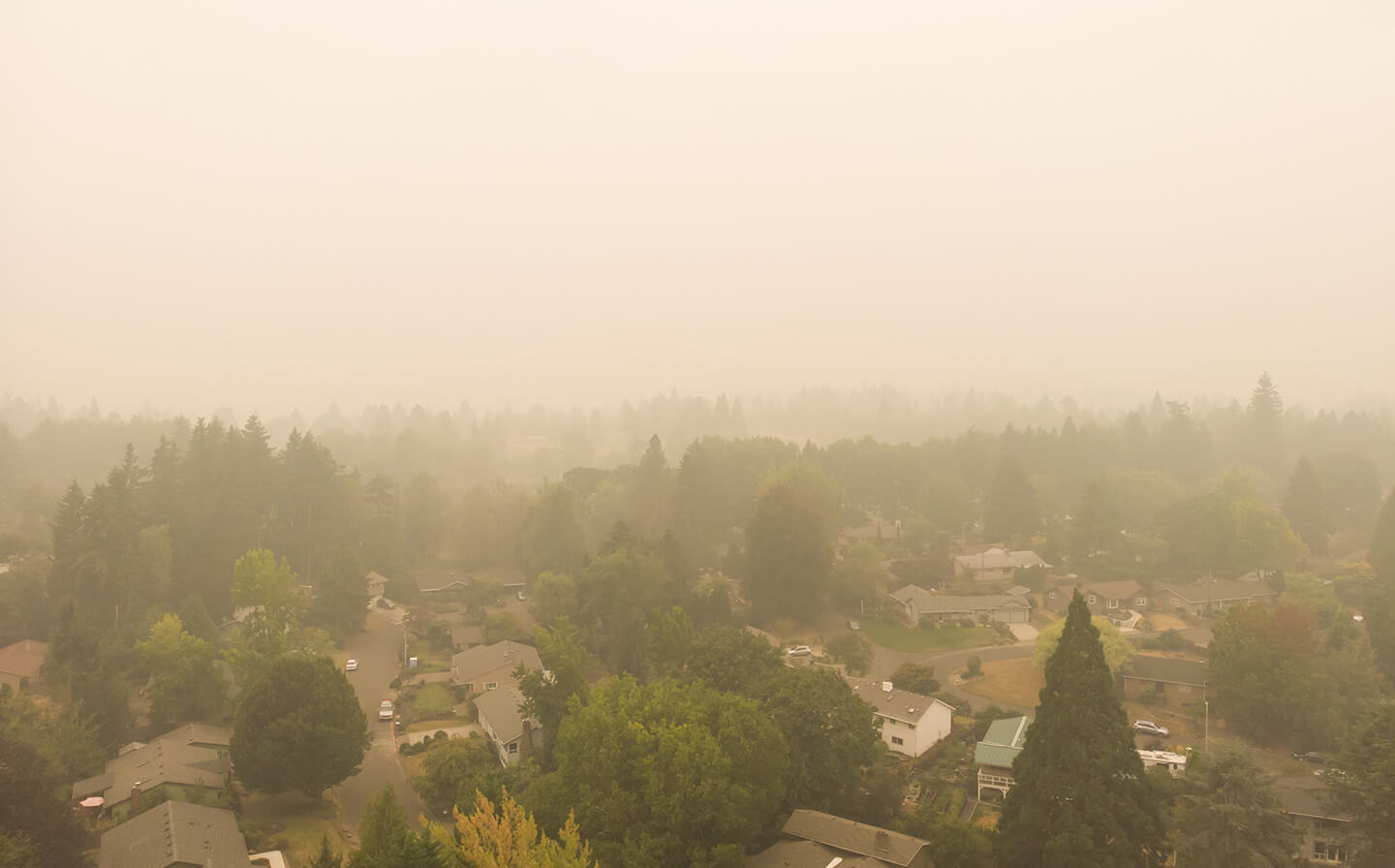
Wildfires release large amounts of particulate matter, carbon dioxide, and other pollutants, which can cause long-term respiratory issues and exacerbate conditions like asthma, even in communities hundreds of miles away.
Loss of Biodiversity
Entire habitats can be destroyed, displacing wildlife and significantly reducing biodiversity within the affected regions.
This loss disrupts ecosystems and threatens the survival of countless species that depend on these habitats for food, shelter, and reproduction.
Erosion
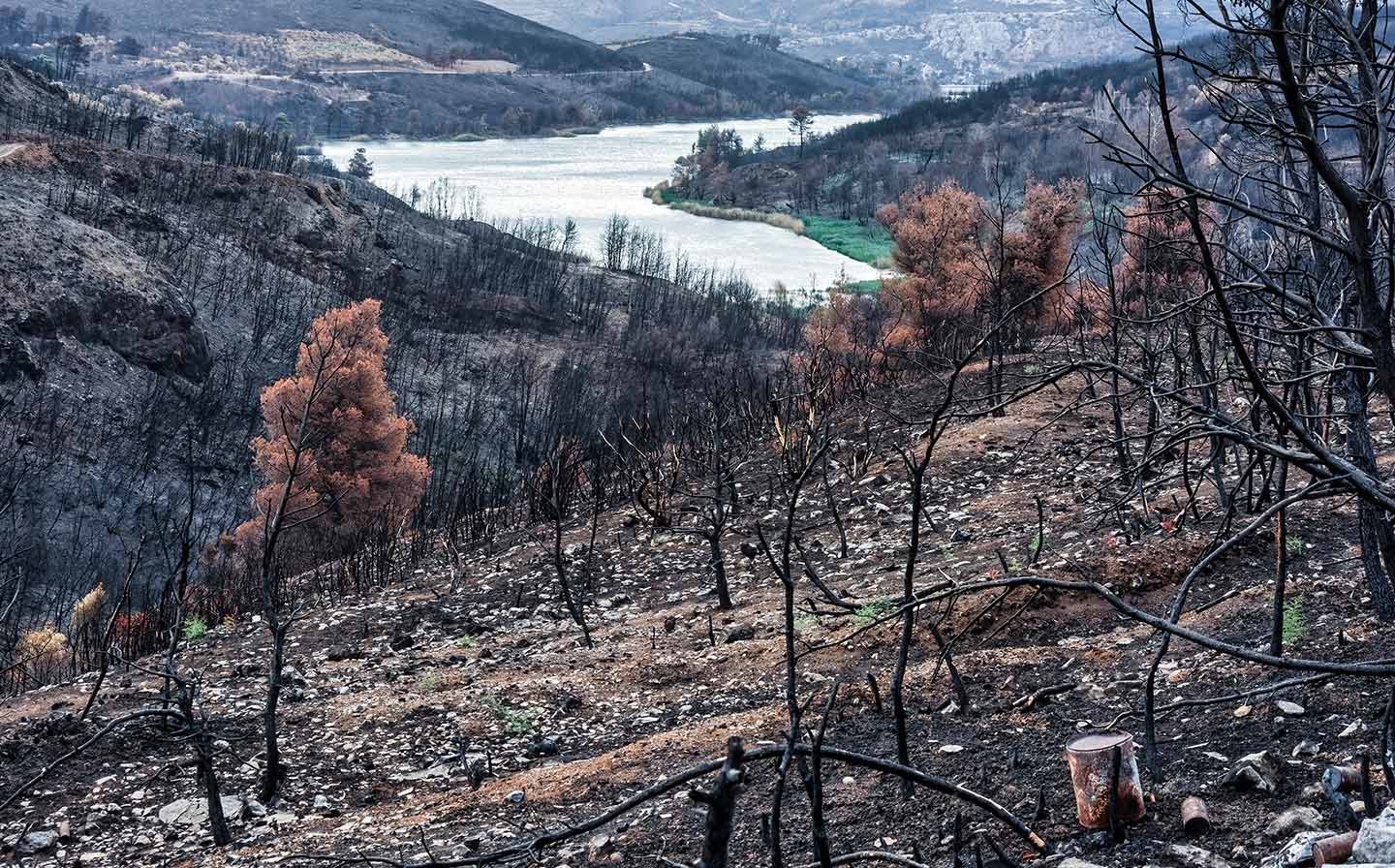
Burned vegetation leaves soil unanchored, leading to erosion, mudslides, and flash floods.
These secondary effects often exacerbate wildfire damage and lengthen recovery efforts.
Carbon Emissions
Wildfires contribute significantly to greenhouse gas emissions, emitting tons of carbon into the atmosphere.
Frequent fires disrupt the natural carbon cycle, creating challenges for environmental restoration.
Water Contamination
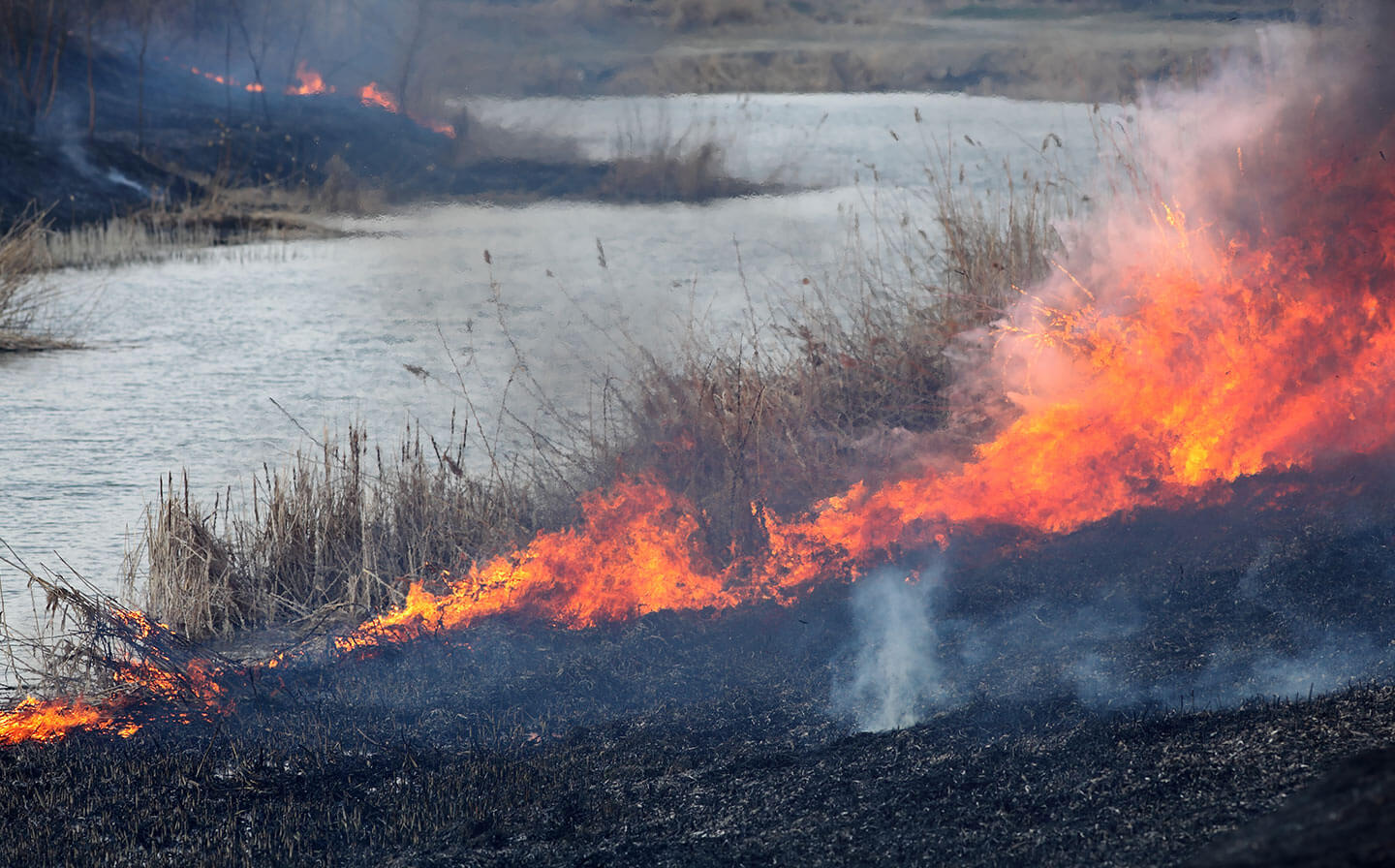
Ash and debris from burned vegetation and structures often infiltrate streams, rivers, and reservoirs, degrading water quality and threatening aquatic ecosystems and even potable water sources.
How Local Land Changes Impact Wildfire Risks
At the local level, even small environmental changes, such as land development or vegetation shifts, can significantly alter fire behavior and increase wildfire risk.
For instance, developing previously untouched land can unintentionally introduce new fire hazards. Clearing forests may reduce natural fire barriers, while adding wooden structures and landscaping can increase available fuel.
These localized changes, when combined with broader climate trends like rising temperatures and prolonged droughts, contribute to an evolving risk landscape.
Communities are now facing greater exposure to environmental change and the escalating threat of destructive wildfires.
Wildfire Prevention and Preparedness Strategies
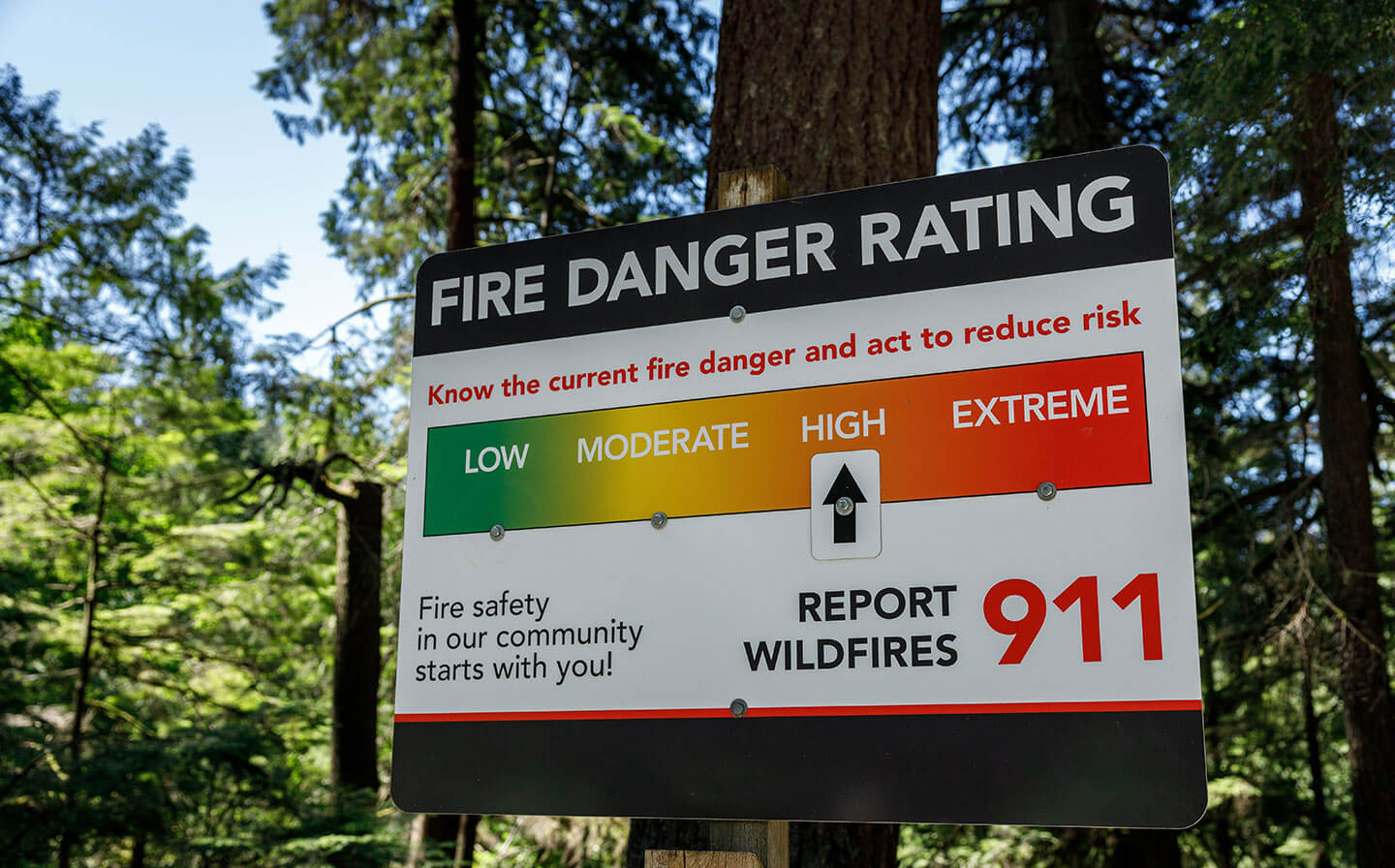
Preparing for wildfires helps minimize damage and protects communities. Wildfire prevention and preparedness start with creating and implementing tactical plans to reduce vulnerabilities.
Government organizations and individuals each have a role to play, with local governments leading the charge by focusing on wildfire mitigation strategies.
How Local Governments Can Mitigate Wildfire Risks
Local governments play a central role in wildfire mitigation.
Their responsibilities include implementing technology, designing preparedness/mitigation frameworks, launching region-specific public awareness campaigns, and encouraging community efforts to build wildfire resilience.
Adopt Innovative Technologies
Advancements in technology significantly enhance wildfire management.
Local governments should look to adopt the following in their wildfire mitigation efforts:
- Predictive Analytics with AI: Tools like FlameMapper and LandFire forecast potential wildfire spread and allow for resource prioritization.
- Geospatial Mapping and LIDAR Technology: These systems identify risk zones, track vulnerable areas, and ensure efficient resource allocation.
- Drones and Satellite Monitoring: Leveraged to survey landscapes and identify hotspots in high-risk fire conditions.
Integrating technology into wildfire mitigation plans helps governments anticipate fire risks, improve response times, minimize damage, and ensure the safety of communities and natural ecosystems.
Developing a Framework for Wildfire Preparedness and Mitigation
Local governments should establish structured frameworks to minimize fire damage and prepare communities for effective responses.
This includes:
- Reducing Vegetative Fuel: Regularly clearing dry underbrush and dead trees to limit fire spread.
- Upgrading Building Standards: Implementing and enforcing fire-resistant building materials, especially in hot zones.
- Creating Defensible Space: Maintaining a 30–100-foot buffer of cleared space around properties to act as a firebreak.
- Enhancing Emergency Preparedness: Organizing regular drills and simulations to train teams and residents for wildfire scenarios.
- Burying Power Lines: Underground power lines in critical areas, while costly, can reduce ignition risks from high winds, equipment failures, or contact with vegetation. They are also more resilient during extreme weather, minimizing the need for disruptive power shutoffs during fire-prone conditions.
Strong frameworks focused on preemptive action are important for building resilient communities. They help identify potential risks, address vulnerabilities, and create strategies to mitigate challenges before they arise.
Enhance Public Awareness Campaigns
Public awareness campaigns are essential for getting the word out about wildfire safety and protecting communities.
One of the most famous public awareness campaigns is the “Only You Can Prevent Forest Fires” campaign. This campaign shows the power of consistent messaging, particularly with students and young people.
Efforts can build on campaigns like this by addressing both regional and community-specific needs. Certain regions are particularly vulnerable to wildfires, making targeted outreach in these high-risk areas especially vital.
Local governments should map these high-risk areas and create tailored public information specific to each region, such as:
- Media Relations: Share region-specific educational content through social media and local news outlets to inform residents about wildfire risks and prevention strategies tailored to their area.
- Emergency Alerts: Use wireless notifications to consistently provide safety updates and urgent alerts during critical wildfire seasons.
- Community Resources: Provide tools and resources for residents to take proactive measures, such as clearing dry brush, maintaining defensible space around their homes, and adhering to fire-safe guidelines specific to their region.
Empowering communities and raising public awareness are key to minimizing wildfire risks, leading to safer, more prepared communities.
Other Government Actions for Wildfire Mitigation
Supporting wildfire mitigation efforts through incentives or modernized policies and practices can drive greater community compliance and preparedness.
Local governments have various options at their disposal, including:
- Grant Programs: Offer grants to property owners for fire-resistant upgrades, such as installing fireproof materials or creating defensible space.
- Tax Incentives: Provide tax credits for homeowners who invest in wildfire mitigation measures like clearing vegetation or upgrading to fire-safe roofing.
- Funding Assistance: Establish funding mechanisms to assist communities in implementing large-scale fire-prevention projects.
- Policy Modernization: In general, modernizing both policies and practices to implement robust fire prevention strategies will help create an environment where fire disasters are less likely.
Governments that provide incentives and strengthen enforcement of wildfire prevention encourage proactive wildfire mitigation measures.
These efforts help neighborhoods become more resilient to wildfire risks and create a greater sense of preparedness and safety within the community.
How Individuals Can Mitigate Wildfires
Residents also play a crucial role in supporting community and government wildfire prevention efforts by adopting fire-safe habits.
Clearing dry vegetation and combustible materials from around homes, using fire-resistant materials for roofing and siding, and practicing safe disposal of flammable items like campfire ash or cigarette butts are all effective measures.
Additionally, maintaining accessible emergency preparedness kits and staying updated with local wildfire alerts and evacuation orders are essential.
When individual community members take personal responsibility in fire prevention, they significantly reduce the risk of fire-related losses and help protect their homes and communities.
Effective Wildfire Response and Recovery Solutions
Wildfire response and recovery solutions require a multi-pronged strategy to restore communities and protect public health.
Local governments’ efforts are crucial, often determining whether recovery is prolonged or sets the foundation for a stronger, more resilient future.
Their actions are central to effective wildfire recovery, from coordinating disaster response to leveraging funding opportunities and ensuring environmental and infrastructure recovery.
The following sections outline key areas where local governments can make the greatest impact:
Environmental Restoration
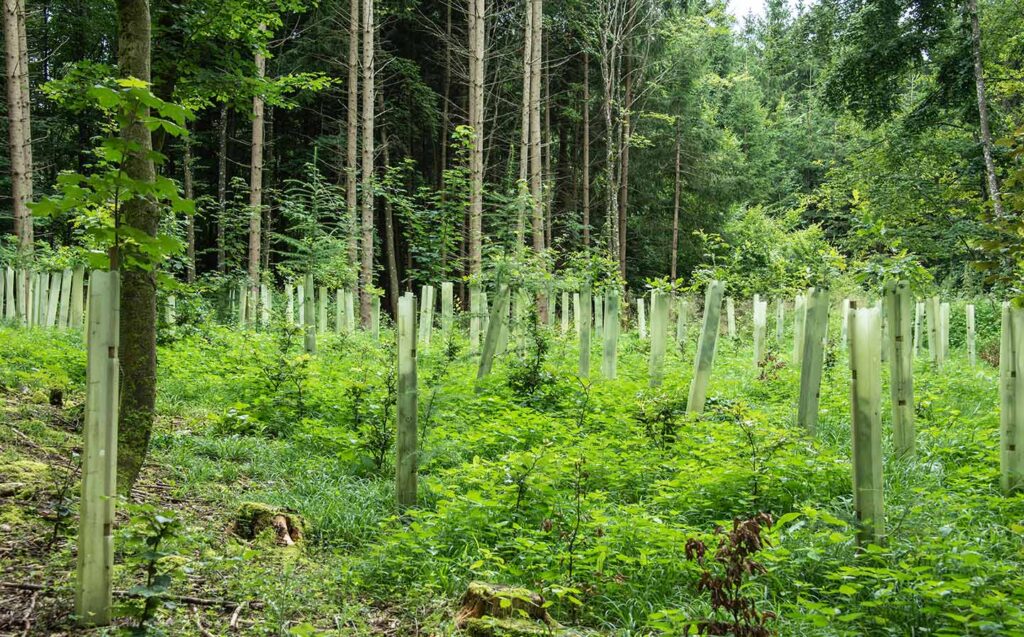
Programs focused on replanting trees, stabilizing soil, and partnering with agencies for erosion control are critical for restoring ecosystems.
Federal resources and local extensions often provide necessary tools and funding for these projects.
Health and Infrastructure Recovery
Public health and infrastructure rebuilding are vital during recovery efforts. Continuous sampling of air and water quality is essential to ensure safety, along with providing adequate filtration systems.
Addressing humanitarian needs such as access to medical care, masks, and bottled water is also a priority.
In the aftermath of a disaster, it’s important to assess and rebuild utilities like electricity and water, as well as restore roads and transportation systems to support community recovery.
Planning and Zoning After Disasters
Post-disaster recovery includes careful attention to planning and zoning regulations. Adhering to zoning and planning reforms established before a disaster should be a top priority for rebuilding safely and mitigating future risks.
Rebuilding in vulnerable areas without consideration of these regulations can leave communities exposed to the same dangers. Ensuring adherence to updated zoning and planning guidelines helps create a safer, more resilient future for affected areas.
Emergency Operations Center

Emergency operations centers (EOCs) play an important role in ensuring effective disaster response and recovery.
When fully equipped and adequately staffed, EOCs enable efficient crisis management and seamless coordination of relief efforts.
Regular training and tabletop exercises are vital to assess readiness, enhance response strategies, and reinforce responders’ ability to support communities in recovering effectively from disasters.
Grant Utilization
Federal grants often support larger wildfire recovery and mitigation projects, providing crucial funding for rebuilding and future wildfire prevention.
FEMA’s Hazard Mitigation Grant Program (HMGP)
This program offers funding to help communities reduce the impact of future disasters through strategic planning and mitigation efforts.
Fire Management Assistance Grants
These grants provide financial support for managing and controlling wildfires, helping local governments respond quickly and effectively during emergencies.
The Community Wildfire Defense Grant Program by the U.S. Forest Service
This program focuses on helping communities implement wildfire defense strategies, ensuring they are better prepared to handle potential risks.
Local governments can leverage these resources to rebuild strategically and establish defenses to protect against future disasters.
Strengthening Community Resilience to Wildfires
At Tidal Basin, we’ve had significant success in supporting communities impacted by wildfires. From providing post-fire public assistance to helping with disaster recovery in states like New Mexico, Hawaii, Alaska, and beyond, we’re committed to making a difference.
One of our key roles is helping states and local communities get reimbursed for disaster-related expenses. This ensures they have the cash flow to reinvest in their local economies and maintain important services, whether for future disasters or mitigation efforts.
We also assist with applying for mitigation and grant projects, helping communities build resilience and defend against future fire risks.
Reach out today if your community needs expert guidance on wildfire solutions such as disaster recovery, reimbursement, or mitigation efforts.
We’re here to help you navigate the process and build a stronger, more resilient future.
FAQs About Wildfires
What are wildfires?
Wildfires are uncontrolled fires that spread rapidly through vegetation, often fueled by dry conditions, high winds, and abundant flammable material.
How do wildfires start?
Most wildfires are caused by human activities, such as unattended campfires, discarded cigarettes, or sparks from equipment. Natural causes, like lightning strikes, account for a smaller percentage.
How hot does a wildfire get?
Wildfires can reach temperatures of up to 2,200°F (1,204°C) or higher, depending on vegetation and weather conditions.
What state has the most wildfires?
California experiences the highest number of wildfires annually. Oregon, Arizona, Texas, Washington, Colorado, Montana, Idaho, Florida, Nevada, Alaska, and New Mexico are also prone to them.
How long can a wildfire last?
Wildfires can last anywhere from a few hours to several weeks, depending on weather conditions, terrain, and available fuel.
What are some ways to mitigate wildfires?
Local governments can work on their wildfire prevention by using tools like AI, drones, and geospatial mapping to reduce risks. They can also implement strategies such as vegetation management, fire-resistant building codes, defensible spaces, and public awareness campaigns focused on communities adopting fire-safe practices.
Individuals can reduce wildfire risks by clearing flammable materials, using fire-resistant home upgrades, staying informed with local alerts, and preparing an evacuation plan with a safety kit.
What is the federal government’s role in fire prevention?
The federal government provides funding, resources, and grants for various wildfire solutions. These solutions for wildfire prevention, preparedness, response, and recovery come through agencies such as FEMA, the U.S. Forest Service, the Bureau of Land Management (BLM), and the National Oceanic and Atmospheric Administration (NOAA).
The Department of the Interior (DOI) and the Environmental Protection Agency (EPA) also play important roles in managing land, protecting ecosystems, and addressing the environmental impacts of wildfires.
What are five rules for preventing fires?
- Clear dead vegetation around homes.
- Never leave campfires unattended.
- Dispose of flammable materials safely.
- Make sure to have a working fire extinguisher at events involving fire.
- Avoid outdoor fires during high-risk weather conditions.
What is the best defense against wildfires?
There are various ways to prevent wildfires, but some top priorities include effective vegetation management, fire-resistant infrastructure, and active public awareness campaigns.
